I’ve reported on significant field curvature with the Fujifilm 20-35mm f/4 GF lens. The purpose of this post is to see how that field curvature affects landscape images in landscape orientation. In this post, I’ll report on how the lens did at 28 mm focal length. In the previous post, I looked at the performance at 20mm. In the next post, I’ll test at 35mm.
I started with a tree 100 meters away in the center of the image.
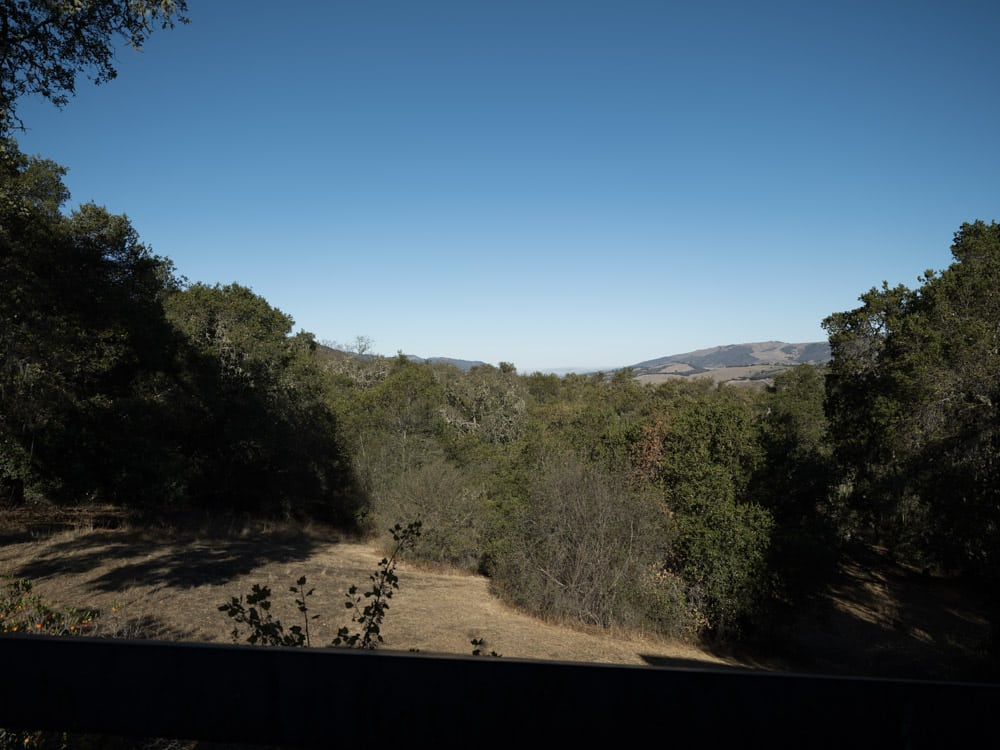
I panned the camera so that the tree fell on the right side near the edge. I made pictures focusing in the center, and refocusing when the tree was at the edge, and also without refocusing from the point where the tree was sharpest in the center. I made two sets of images, and picked the sharpest ones. The Fuji manual focusing at high magnification with peaking is good enough that both sets of images were about the same sharpness.
I used the side instead of the corner a) because it was easier, and b0 because I thought it was more realistic for landscape photography, where the subject distance at the corners of the image is usually not the same as to the center.
Details:
- GFX 100S
- 20-35 GF
- 2-second self timer
- ISO 100
- Manual focus
- Low red peaking
- Maximum magnification
- RRS legs, C1 head
- Developed in Lr CC with defaults except for
- Adobe Standard Profile
- Sharpening amount 20, radius 1, detail 25
- Daylight color balance
Here are some crops at about 250% magnification.
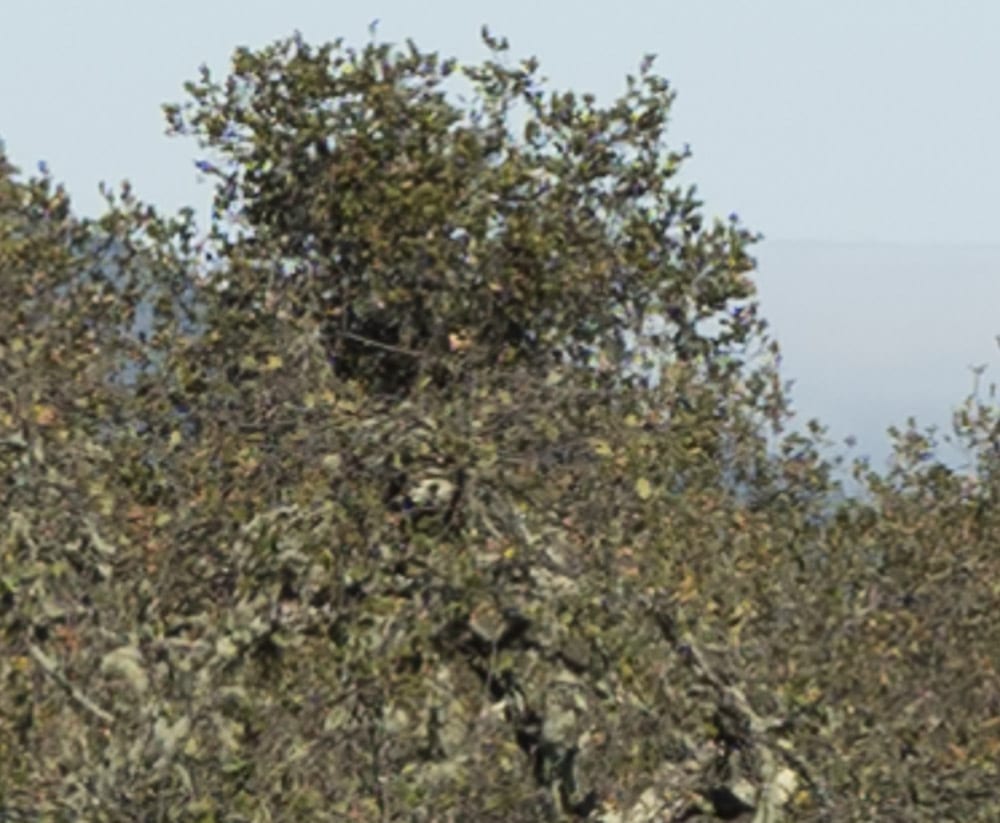
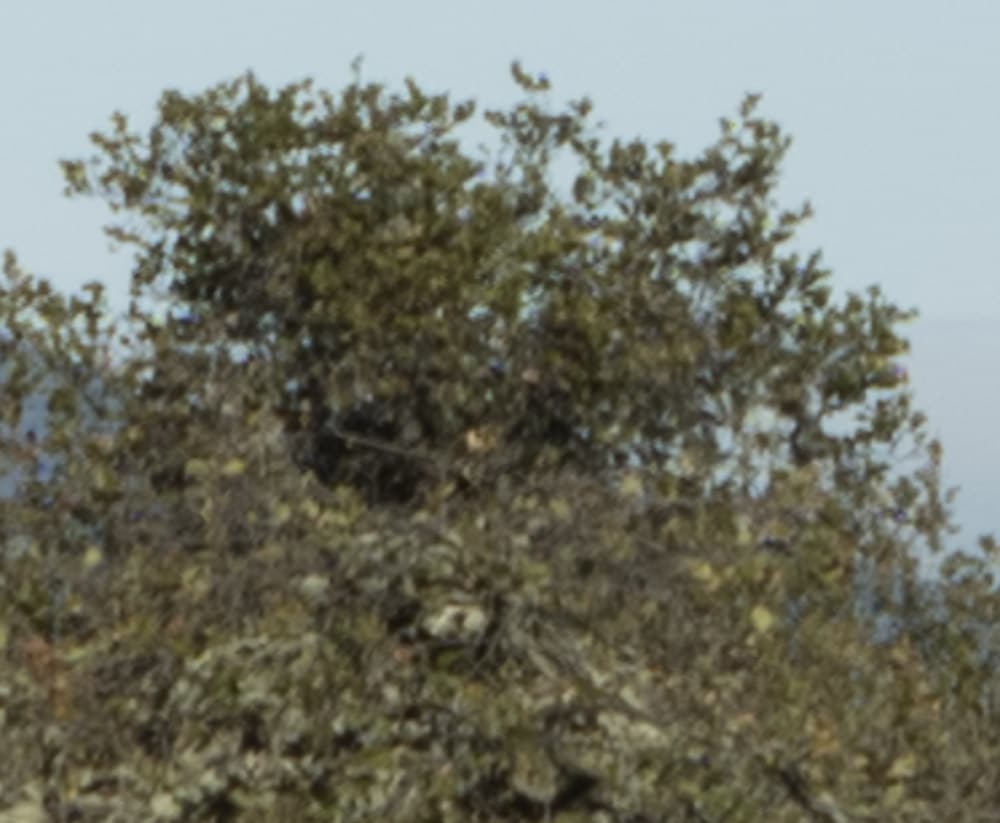
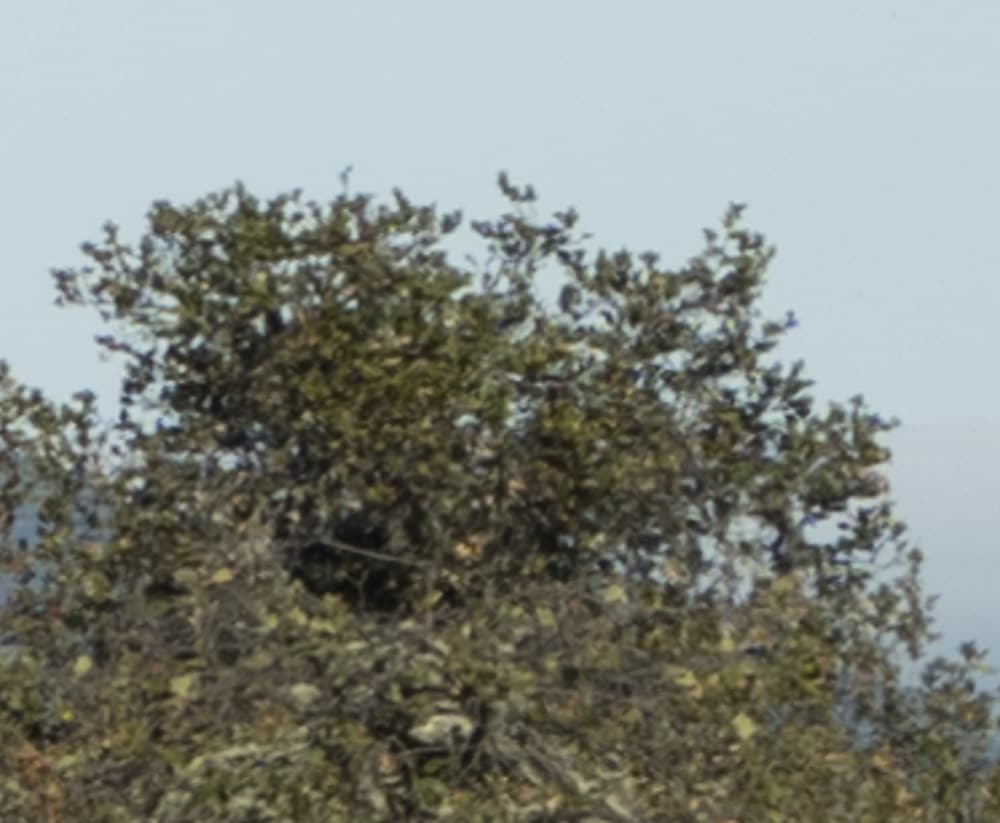
Refocusing pays off generously at f/4.
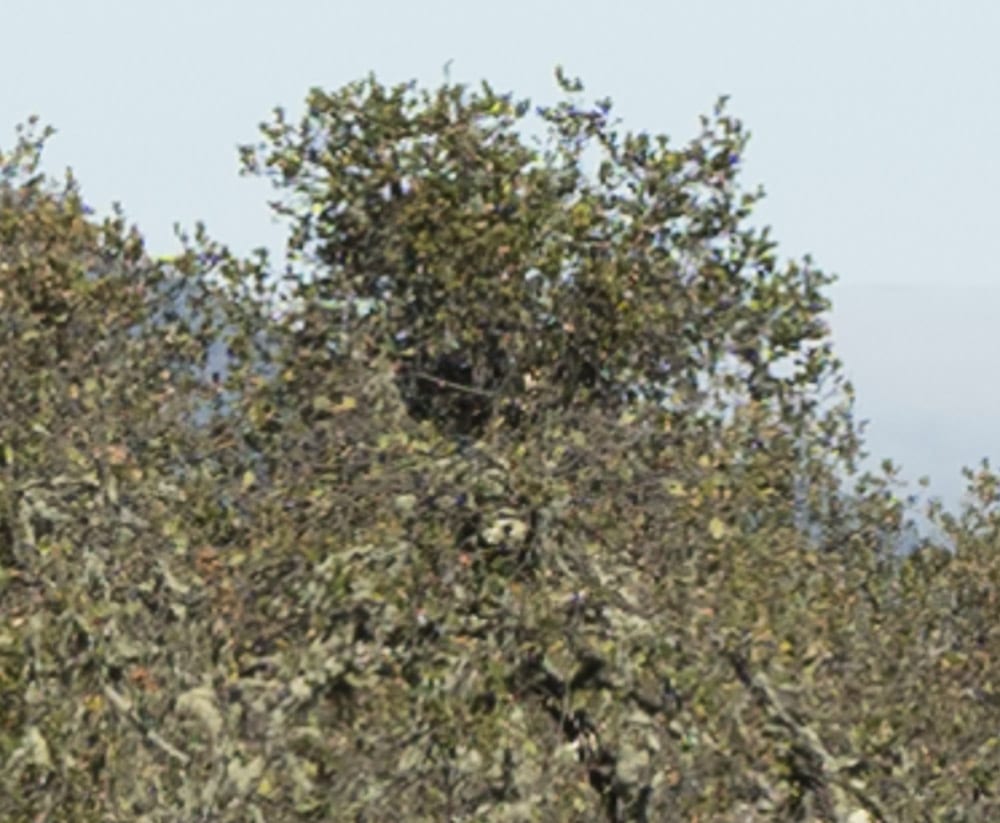
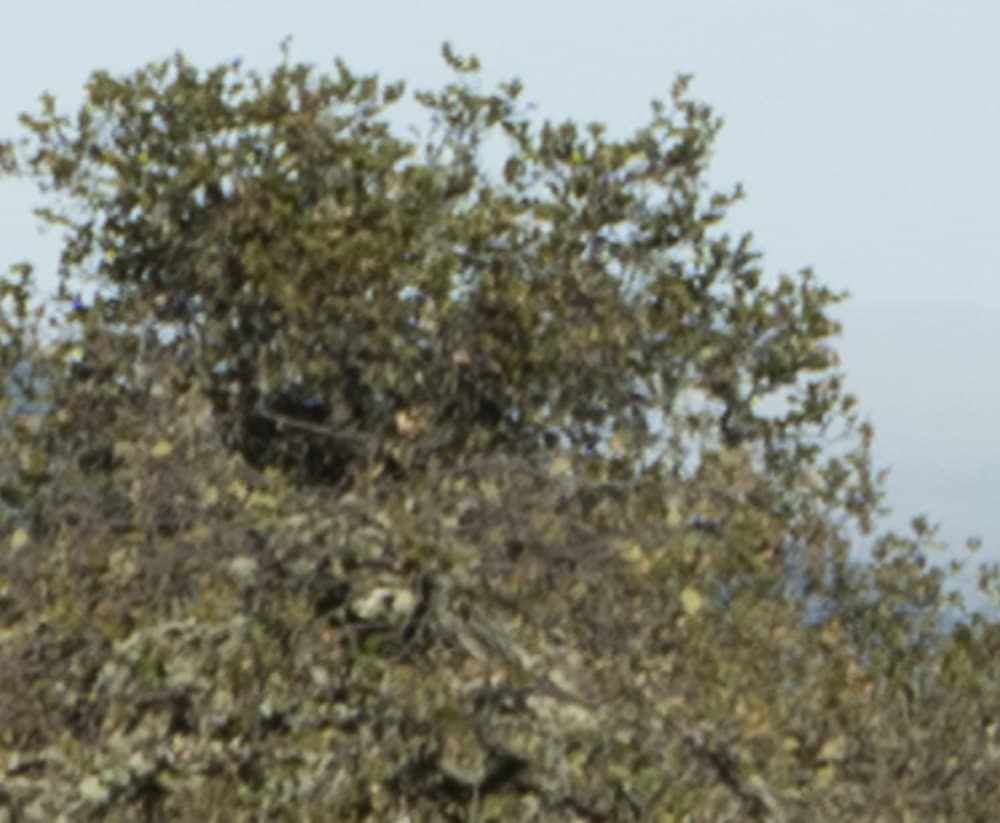
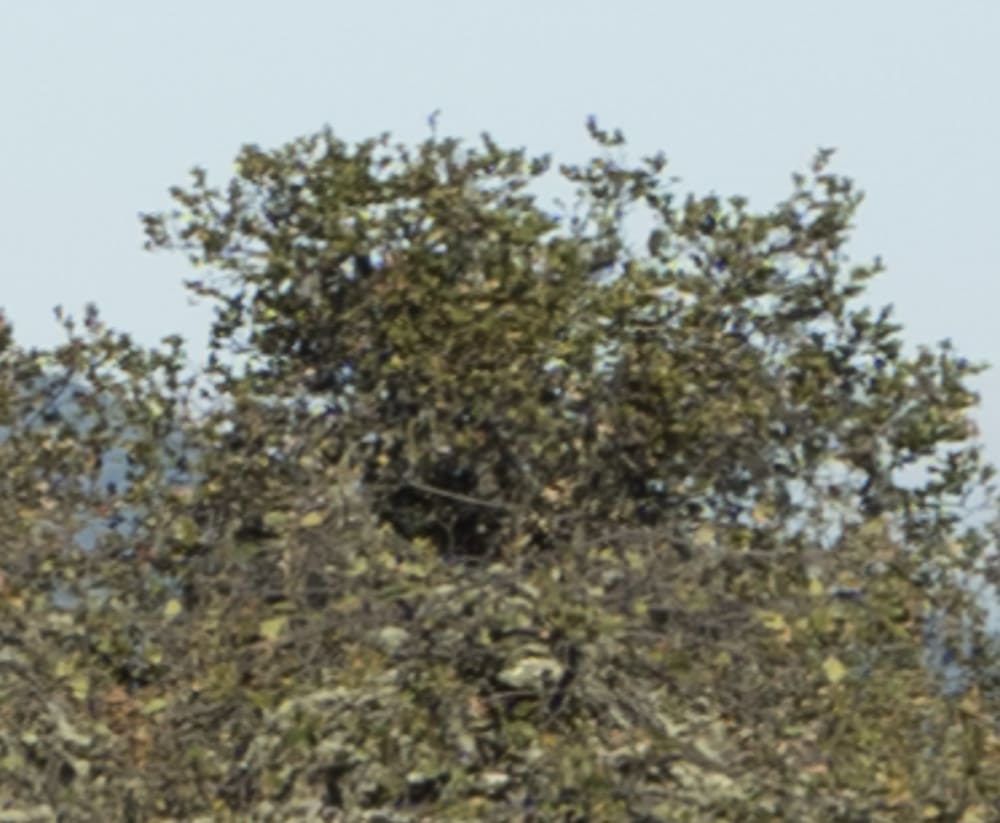
The refocused image is substantially better.
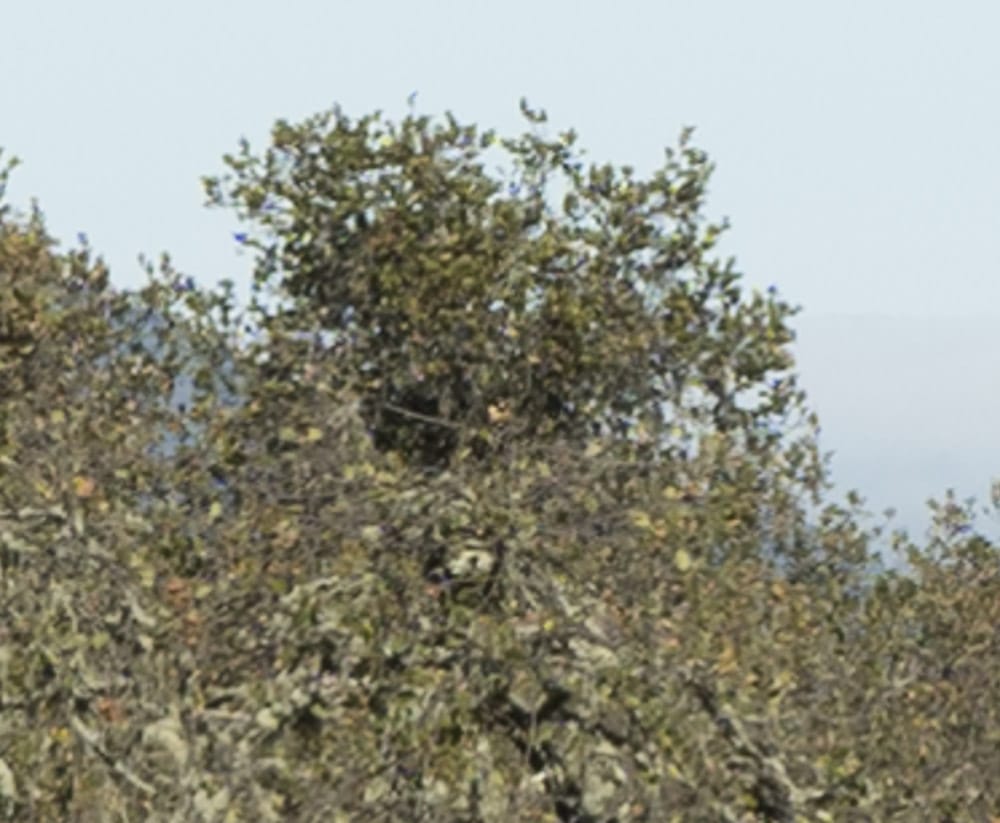
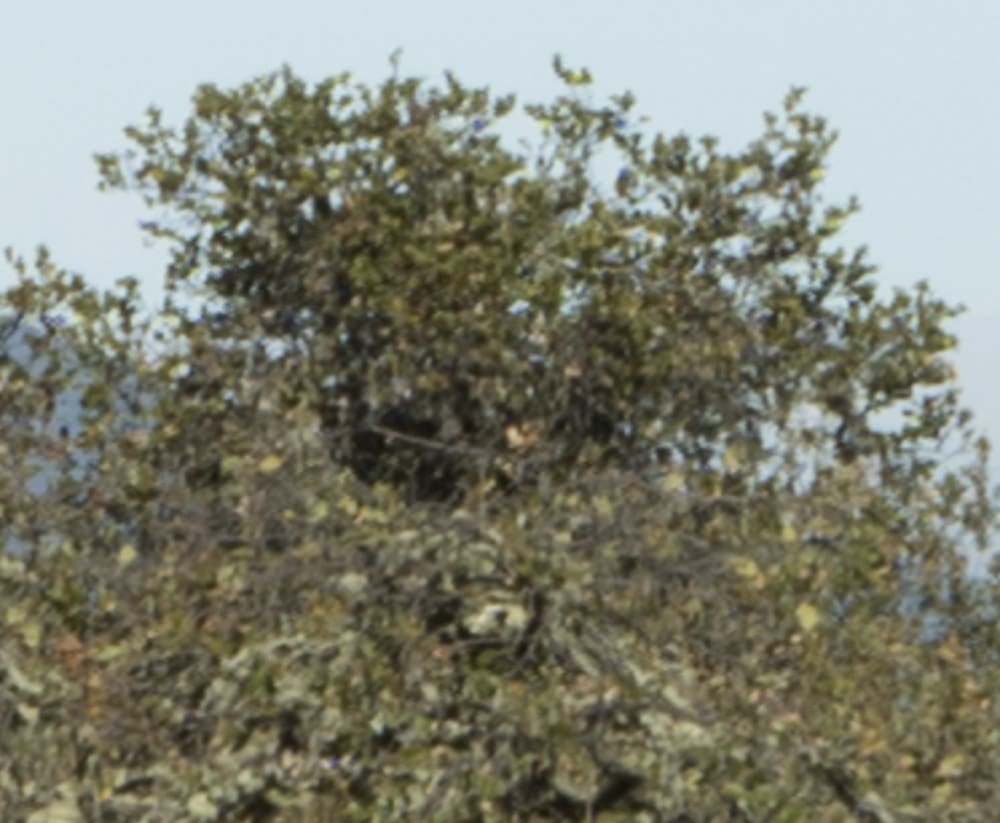
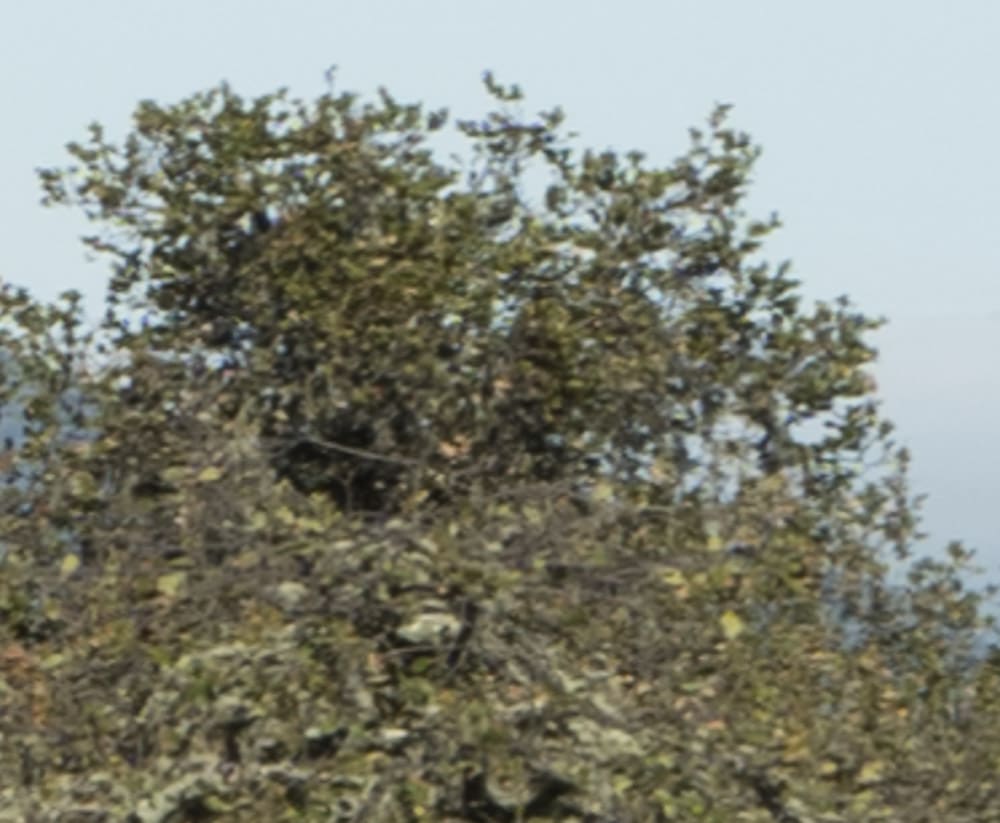
Looks like f/8 is fine for distant landscapes, but it’s still better to focus on the side if that’s your subject.
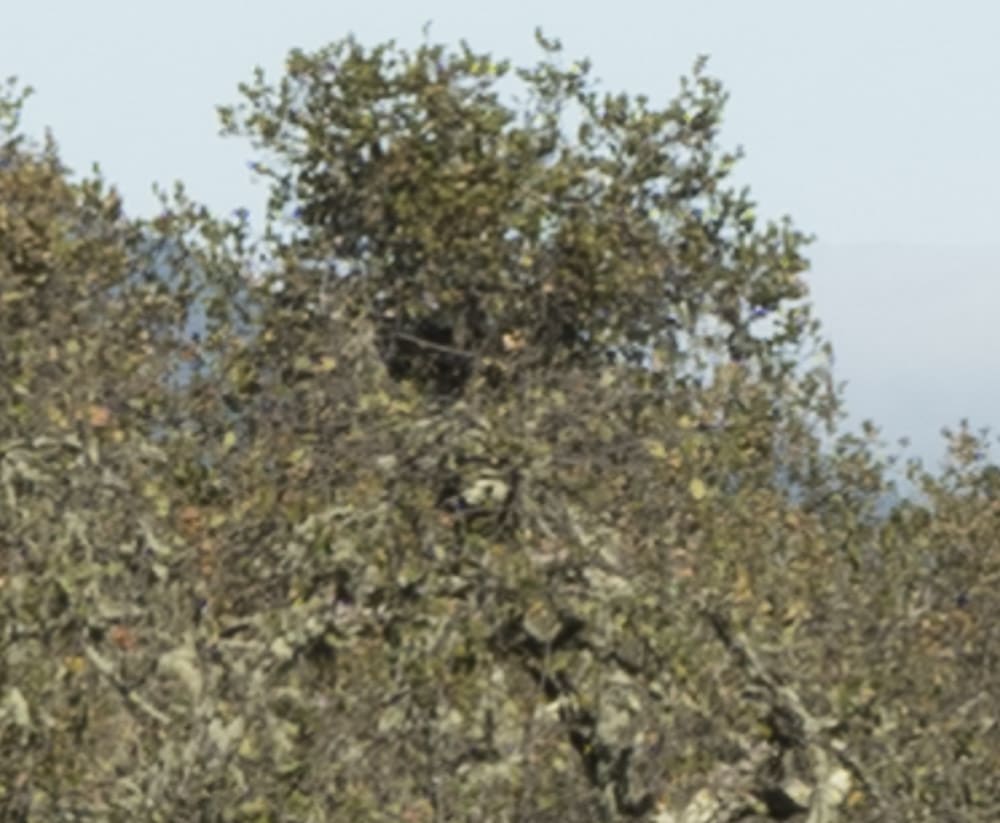
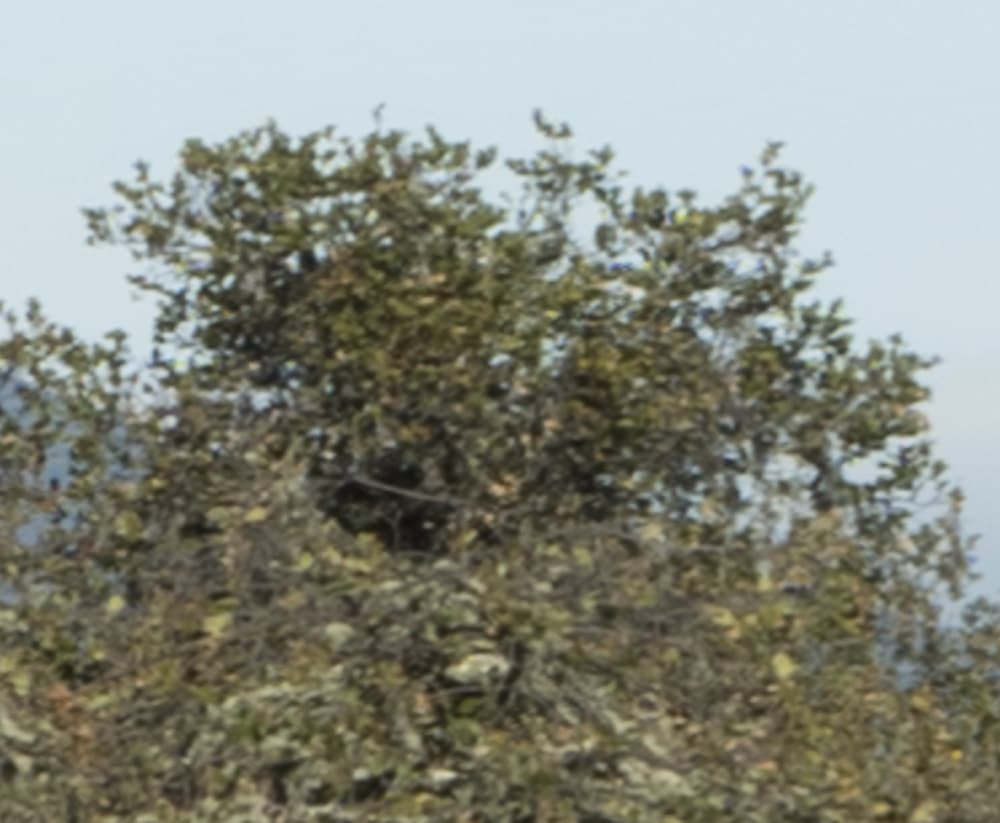
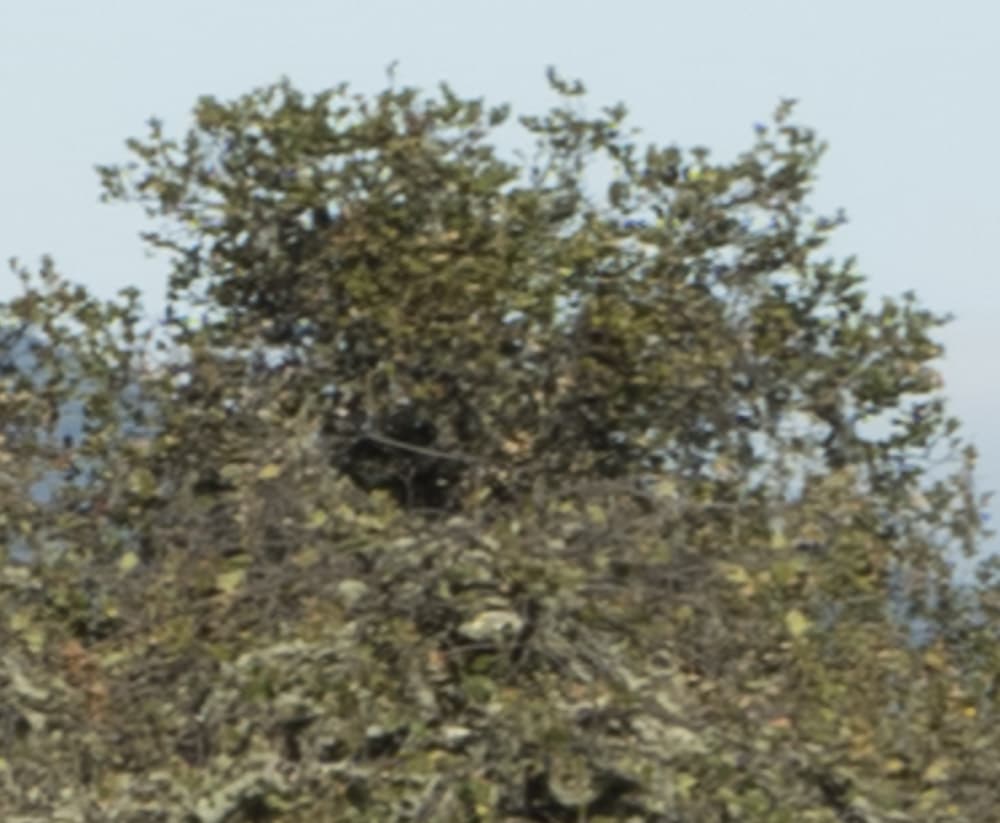
F/11 is noticeably softer, but the field flatness is not a problem at f/11.
Leave a Reply